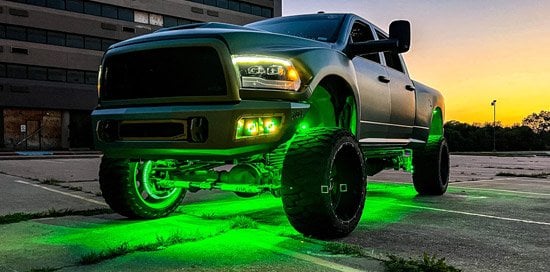- September 18, 2024
- Posted by: legaleseblogger
- Category: Related News
Speed-Dial AI Lawyer (470) 835 3425 FREE
FREE Legal Document translation

Try Free Now: Legalese tool without registration
Inquiry Regarding Vehicle Light Modifications and Legal Discrepancies
For several months, I have been actively seeking clarity on a complex issue that perplexes many vehicle owners and enthusiasts alike.
Understanding Vehicle Light Modifications
Vehicle light modifications refer to an array of lighting enhancements that go beyond standard factory settings. These modifications include various forms of lighting such as light bars, undercarriage lighting, neon accents, and other similar features. While they can certainly enhance the aesthetic appeal of a vehicle or even provide additional visibility during nighttime driving, the legality surrounding their use poses significant questions, particularly when considering public safety and state regulations.
The Legal Landscape: Public Roadways and Light Activations
In numerous states, the operation of modified vehicle lights on public roadways is deemed illegal. This prohibition is largely attributed to concerns that such lights can be distracting to other drivers. Moreover, in jurisdictions that do permit some forms of vehicle lighting, there are specific restrictions regarding the colors that can be used. For example, lights that resemble those typically found on emergency vehicles or construction service vehicles can lead to confusion among the general public, potentially causing accidents or unsafe driving conditions.
Example of Light Modified Vehicle
To illustrate this, consider a car equipped with bright blue and red light bars. While the owner may appreciate the updated look, similar to emergency responders, it can mislead other drivers into thinking that they are approaching a police vehicle, which is clearly problematic from a safety standpoint.
Mobile Billboard Trucks: A Paradox?
Interestingly, the law does seem to take quite a different stance when it comes to commercial entities, such as mobile billboard trucks. These trucks are permitted to operate with their advertising lighting fully activated on public roadways.
Example of Mobile Billboard Truck
For instance, a mobile billboard truck featuring vibrant advertisements often showcases its messages using bright and flashy lights, thus drawing attention from passing motorists. Unlike the modified vehicles we previously mentioned, these billboards face no legal repercussions for their illuminated displays, which raises a crucial question.
The Double Standards in Vehicle Lighting Laws
This leads us to an apparent double standard: How is it that one category of vehicles can legally operate with active lights, while another faces legal restrictions? The inconsistencies in regulations commonplace in different states lead many to question the fairness and basis of these laws. Are the authorities prioritizing advertising revenue over public safety? Or are they merely enforcing rules that do not equally apply to all vehicle classes?
I, too, find myself grappling with this dilemma and seek an explanation for these contradictions. The ongoing ambiguity surrounding light modification laws feeds public discontent and distrust.
How AI Legalese Decoder Can Help
To navigate this convoluted legal landscape, the AI Legalese Decoder can serve as a vital tool. This innovative platform demystifies legal jargon and helps users fully comprehend the specific laws and regulations concerning vehicle modifications. By providing clearer interpretations of legal texts, it can assist individuals in understanding which light modifications are permissible in their jurisdiction, helping them to avoid fines or other penalties.
Furthermore, the AI Legalese Decoder can analyze the legal framework surrounding mobile billboard operations versus modified vehicles, shedding light on the reasoning behind the differing regulations. Users can ask specific questions about their local laws and obtain tailored guidance, making it easier to comply with existing regulations while advocating for changes to unfair practices.
Conclusion
In conclusion, the quandary surrounding vehicle light modifications versus mobile billboard lighting continues to be a pertinent issue deserving of attention. As I search for answers, tools like the AI Legalese Decoder can offer invaluable assistance in clarifying our understanding of these legal differences and equipping vehicle owners with the knowledge they need to navigate these regulations effectively. Thank you for your attention to this pressing matter.
Speed-Dial AI Lawyer (470) 835 3425 FREE
FREE Legal Document translation
Try Free Now: Legalese tool without registration
Certainly! Please provide the content you’d like me to rewrite, and I’ll be happy to assist with that.
Speed-Dial AI Lawyer (470) 835 3425 FREE
FREE Legal Document translation

 ****** just grabbed a
****** just grabbed a